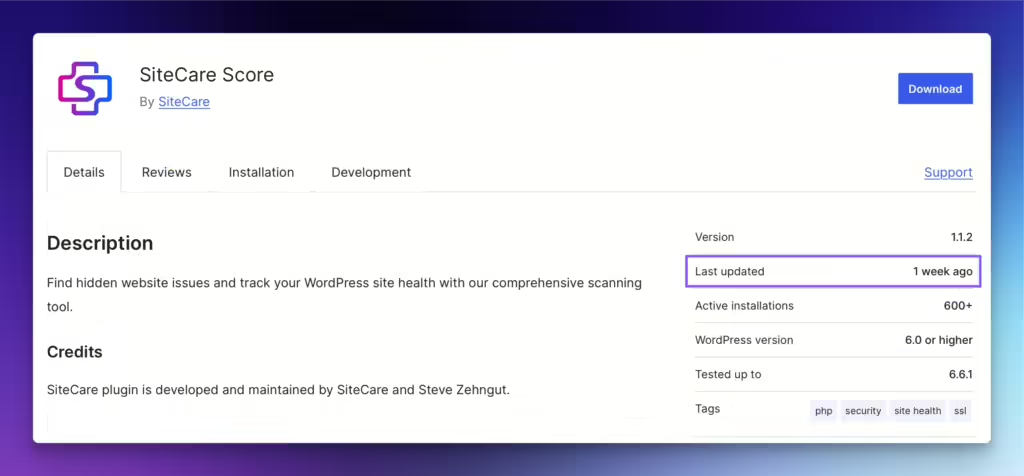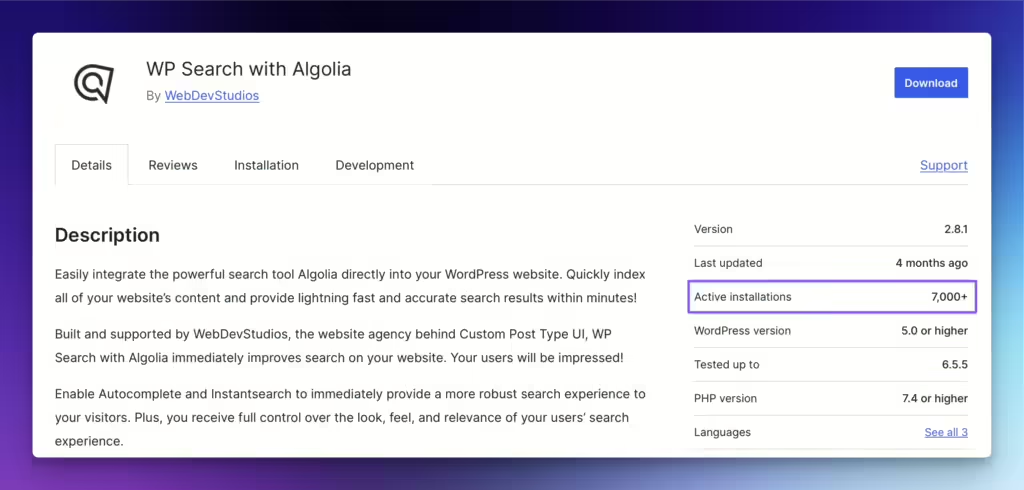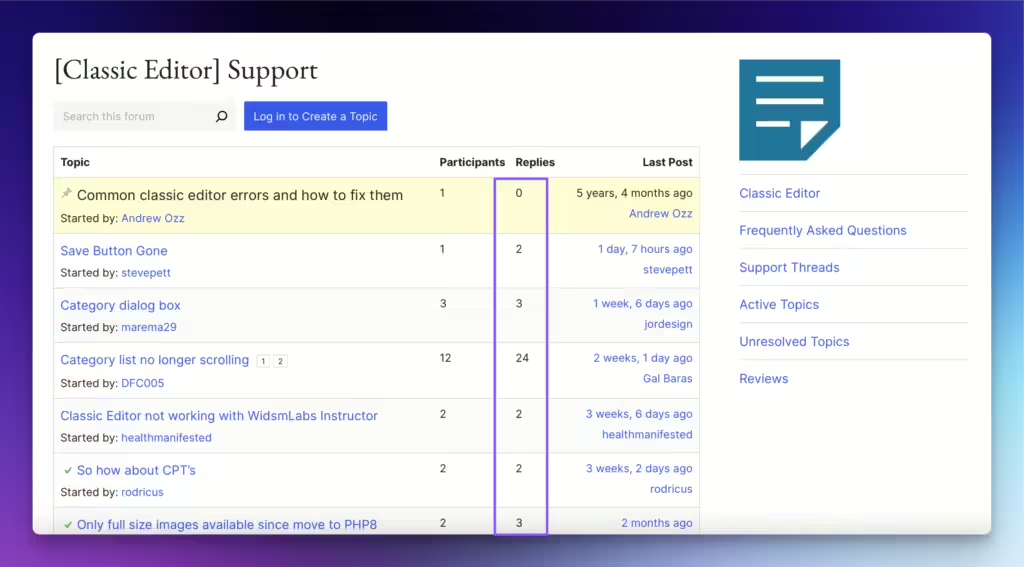Every day we get asked for recommendations how to choose WordPress plugins. We certainly have favorites, but with the size of the WordPress plugin repository, it’s not possible for us to track them all.
The WordPress.org repository currently houses 60,000+ plugins, and that doesn’t include any premium plugins! So narrowing down your search to find the best plugin in any given category can feel like finding a needle in a haystack.
The good news is that we don’t need to stay on top of every single addition and subtraction at WordPress.org to find a solid plugin when the need arises. Here are five easy steps find the best WordPress plugins for your website.
Step 1: Find out when the plugin was last updated

The “freshness” of a WordPress plugin isn’t necessarily an indicator of its quality. In fact, sometimes a plugin that’s updated too frequently can be a sign of an amateur developer trying to keep their head above water by submitting emergency hotfixes.
That said, a plugin that’s been updated recently is a good indication that the plugin is being maintained and will be updated in the future. Make sure your plugins are fresh before adding them to your website.
If you see that a plugin hasn’t been updated in six months or more, look at recent support requests to see if the author is still actively responding.
You can easily find the freshness info by looking at the plugins profile page on WordPress.org (see screenshot above). If you want bonus points you can get really nerdy and look at progress in the development log.
Step 2: Check the number of active installations

Directly below the “Last Updated” data, you’ll find a number for active installations. This is how many websites worldwide currently have the plugin activated (ballpark estimate).
When deciding whether or not to use a plugin on your own website, find plugins that have a higher active installation number.
More active installations mean the plugin is popular and probably has a nice feature set. Perhaps even more importantly, it means that the plugin has been tested in lots of strange scenarios and is less likely to break your website or have compatibility issues.
The most popular plugins on the WordPress repository like Yoast SEO have over 10 million installations!
Step 3: Understand the plugin rating system

A few years ago the WordPress.org team enhanced the plugin ratings system and it’s become incredibly useful. Don’t install anything with 2-stars or below. And proceed with caution when you see 3-star reviews.
But also don’t be frightened by isolated one-star reviews. Sometimes people are bad and leave unsolicited bad reviews for no reason.
This fellow left a one-star review because he disagreed with the premise of the plugin. It didn’t cause problems. It didn’t have bugs. But because he believed it shouldn’t have been created in the first place, he left a 1-star review. Sad.
Context and content matter. If you see a plugin with a few 1-star reviews, and a few hundred 5-star reviews, you can install that plugin with confidence.
Step 4: Is the support forum active?
The WordPress.org support forum is very active. Thousands of topics and replies are posted daily, so I don’t like to see forums that are too quiet, specifically on the plugin author side.
To be clear, if no one is actually posting support requests at all, that’s great! It’s super rare, but it probably means that the plugin “just works”.
Even for the super simple plugins, we’ll often see requests from people wanting the plugin to be extended or to do more than the plugin author intended.
If you see a support forum with lots of requests and zero replies, that’s usually a bad sign and indicates the developer no longer supports the plugin. Or even if support isn’t officially discontinued, they’re simply too busy to give adequate attention to plugin users.
The support area on the Classic Editor plugin is very active with lots of replies to every request. This is the type of pattern you want to see with any plugin you consider adding to your website.

Step 5: Ask a WordPress expert
If you’ve followed the first four steps and you’re still unsure of whether or not a plugin is right for your website, I recommend flipping a coin!
OK, don’t flip a coin. Instead, ask some of the trusted experts around you for advice. If you don’t have a trusted circle to reach out to, our team is happy to help and you can contact us anytime.
But before asking for guidance, spend time figuring out exactly the problem you’re trying to solve. If you can clearly articulate what you need your website to do, and can also present 3 or 4 options that you’ve found in your research, the pros around you will really appreciate the work that you’ve put in and will point you in the right direction.
Bonus Round: What about premium plugins?
Knowing whether or not a premium WordPress plugin is going to be well-built and reliable is a lot more difficult to gauge. We have several included in our list of best WordPress plugins.
And even though the data might not be quite as transparent, I’d give the same guidance when evaluating premium plugins.
- Is the plugin actively developed? Even if no public changelog is available, you should still see plenty of activity on the company’s blog and social media accounts.
- While active installation numbers won’t be publicly available, there are still some indicators you can use. For example, a Google Search for Gravity Forms returns 412,000,000 results, where Ninja Forms returns 59,300,000. Those certainly aren’t active install numbers, but it’s at least an indication of popularity.
- Ratings are going to be tricky. Lots of online reviews for premium plugins are going to be driven by affiliate marketers. Your mileage may vary when seeking out reviews for premium plugins.
- Most premium plugin providers put their support behind some type of paywall, but there are still plenty of open forums. You can also submit help requests before purchasing the plugin to get a sense of how responsive the company is and their interest level in helping out their customers.
How do you evaluate WordPress plugins? Got any tips or tricks to share for finding the best plugins out there? Hit us up in the comments! And if you’d like ongoing expert help with plugin selection, updates, and troubleshooting, our WordPress website support services are here to keep your site running smoothly and securely.




4 responses to “How to Choose WordPress Plugins in 5 Easy Steps”
Thanks for the guide, very helpful.
Of course. Happy to help!
According to you which AMP plugin is good?
Gravity Forms also has two Facebook groups.